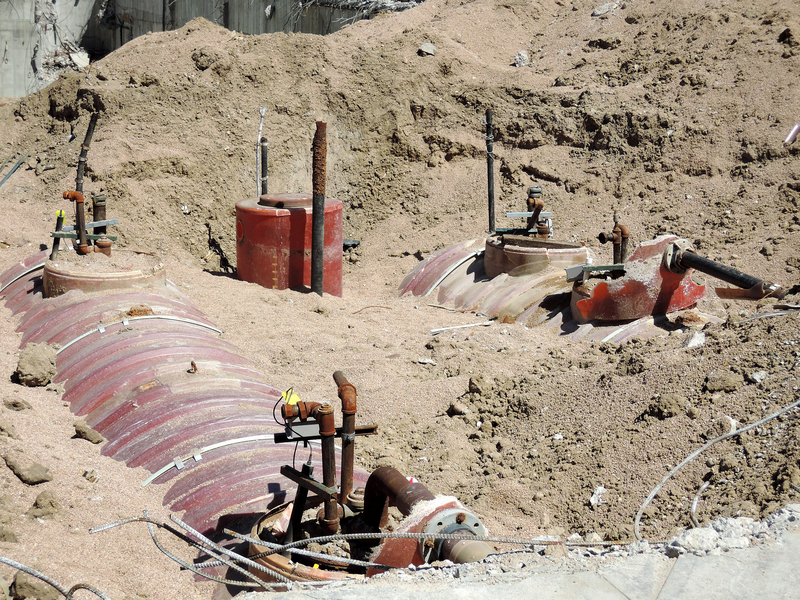Environment, health and safety (EHS) managers are often tasked with managing underground storage tank (UST) systems. It’s no wonder that with three classes of UST operators to deal with, a recent report shows that the most common violation found during UST inspections involves training. Today we’ll take a look at the report, and tomorrow we will offer some tips for training Class C UST operators—those who are on the front line of potential spills.
 |
According to a recently released report by the Association of State and Territorial Solid Waste Management Officials’ (ASTSWMO) Tank Subcommittee UST Task Force, the most common violation found during UST inspections involves deficiencies in operator training.
Note: The federal Energy Policy Act of 2005 added requirements for the U.S. Environmental Protection Agency (EPA) and states receiving funding for UST programs to conduct on-site inspections of each regulated UST at least once every 3 years.
The ASTSWMO UST Task Force solicited information for fiscal year (FY) 2014 from all 50 states, five territories, and the District of Columbia in an effort to determine the violations most often encountered during UST compliance inspections. Responses were received from 31 states and one local agency, covering nearly 43,000 UST inspections and more than 47,000 violations. The Task Force conducted similar information request in federal FY 2010 and 2012.
Top 5 Violations
A review of the data identified the following top five inspection violations:
- Operator Training: 9,251 total violations, 43% of which involved failure to meet the Class A/B/C training requirements, 27% involved failure to conduct periodic inspections, and 25% involved failure to provide or post training documents.
- Release Detection—Piping: 8,797 total violations, 49% of which were for failure to annually test the automatic line leak detector, and another 49% for failure to perform an annual line tightness test.
- Spill Prevention: 5,922 total violations, over 94% of which were for failure to clean and maintain the spill device.
- Release Detection—Tanks: 4,214 total violations, 97% of which were for failure to perform monthly monitoring—specifically, the failure to conduct automatic tank gauging.
- Financial Responsibility: 3,917 total violations, 69% of which were for failure to comply with financial responsibility requirements, and 31% were for failure to provide financial responsibility. This was the first time financial responsibility made the top five, and the Task Force attributes that possibly to the fact state cleanup funds are longer available as a financial mechanism in many states.
As pointed out in the report, operator training violations almost doubled from 2012 to 2014, and this followed a large increase from 2010 to 2012. The Task Force attributes this to state efforts to implement and enforce the operator training requirements of the 2005 Energy Policy Act, which now have the force of regulation under the 2015 UST amendments.
ABC’s of Operator Training
Note. Owners and operators of existing UST systems have until October 13, 2018, to come into compliance with operator training requirements. Owners and operators of new USTs brought into service after October 13, 2015, must comply at the time of installation.
The EPA defines three classes of UST operators and tailors the training requirements accordingly.
Class A operator. These are the individuals who have primary responsibility to operate and maintain the UST system in accordance with applicable requirements established by the implementing agency (must be at least as strict as the federal requirements). Class A operators typically manages resources and personnel, such as establishing work assignments, to achieve and maintain compliance with regulatory requirements.
Class B operator. These operators have day-to-day responsibility for implementing the UST regulatory requirements. Class B operators typically implement in-field aspects of operation, maintenance, and associated recordkeeping for the UST system.
Class C operator. These UST operators are responsible for initially addressing emergencies presented by a spill or release from a UST system. Class C operators typically control or monitor the dispensing or sale of regulated substances.
Under the 2015 UST amendments:
- UST owners/operators must designate at least one individual for A and B operator classes and everyone that meets the Class C definition. Operators must be trained on minimum defined areas and may need to be retrained if the UST system is not in compliance.
- Owners/operators must maintain a list of designated operators currently trained at each facility and proof of training and retraining. This documentation may be kept off-site.
What About My State?
Currently, 38 states plus the District of Columbia and Puerto Rico have state program approval (SPA) and have until October 13, 2018, to reapply in order to retain their SPA status. UST owners and operators in these states must continue to follow their state requirements until the state changes its requirements or until the state’s SPA status changes.
Owners and operators in 16 non-SPA states and territories must meet the federal UST training requirements by October 13, 2018. In addition, owners and operators will need to follow their state requirements.
Once their programs are approved, states have the lead role in UST program enforcement. In states without an approved program, the EPA tries to work with state officials in coordinating UST enforcement actions.
